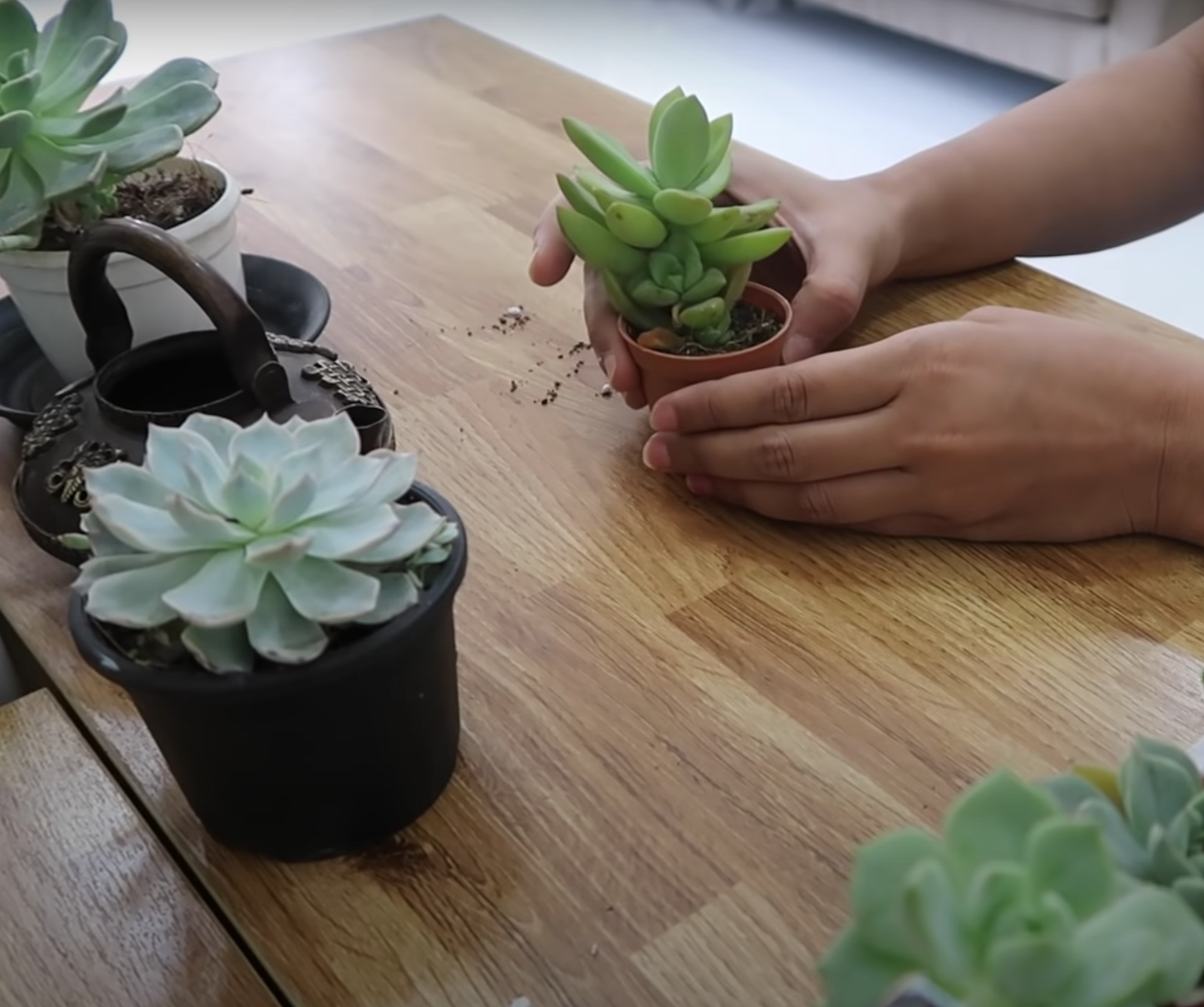Watering succulents correctly is an important procedure for succulent health and care. But, how often to water succulents? I like to water succulents and cacti once a week. Here, I share tips and tricks on how to water them correctly.
First and foremost to know about succulents is that they are desert plants which means they are accustomed to thriving in an environment where there is a severe scarcity of water.
If you water them accessibly, they are going to die due to root rot.
The plant soil may look dry from the top, but it contains water in the bottom and lower part of the soil that you can’t see as it is inside the pot.
So, even if you water them scarcely, for example, once in two weeks, they will not die and be healthy.
There are two kinds of containers or pots for succulents and cacti. One is a big size pot; in this case, the soil holds moisture or water for a longer duration.
Another is small size pots, they will lose steam more quickly. So, water the small pot of succulents and cacti more often like every week.
How to water succulents correctly?
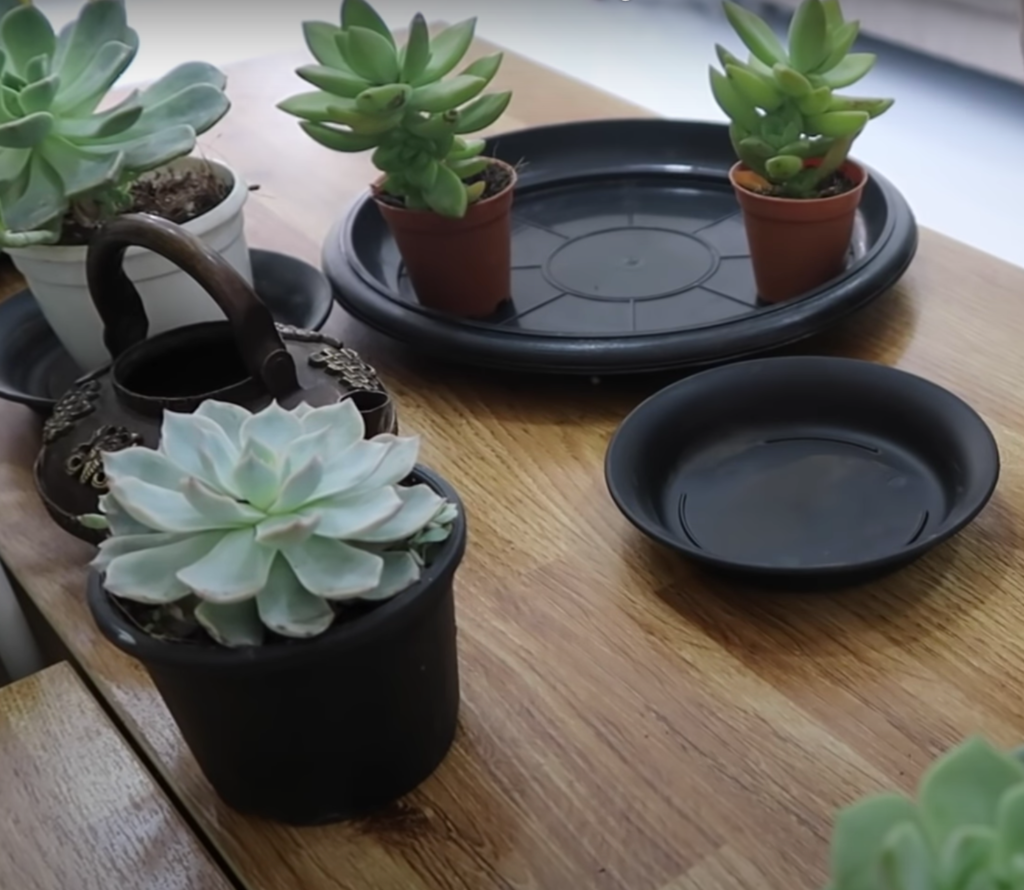
Take a drainage disc of any size. Ideally, larger than the succulent pot.
Place the succulent pot on the drainage disc.
And gently water the plant using a bottle, splasher, or squeezer.
Keep in mind when you water a succulent or cactus is that you should water the soil in the pot and shouldn’t pour water directly on the leaves or stems because doing so will allow fungus or decay.
Keep adding the water unless you see excess water on the bottom of the pot, i.e. on the drainage disc.
The excess water that the root can’t hold will get out of the pot using the pot drainage hole.
Keep the succulents pot on the excessive drainage disc water for a few minutes so that the base root will get a good soak due to capillary action.
Take out the succulent pot of the drainage disc and drip the water out of the succulent pot and gently shake.
Why do Succulents need Sun?
Remember, succulent and cactus like Sun. So, at least 2 to 3 hours of direct sunlight is needed daily.
Direct sunlight means the sun should be falling directly on the plant without any obstruction or diversion from the shade.
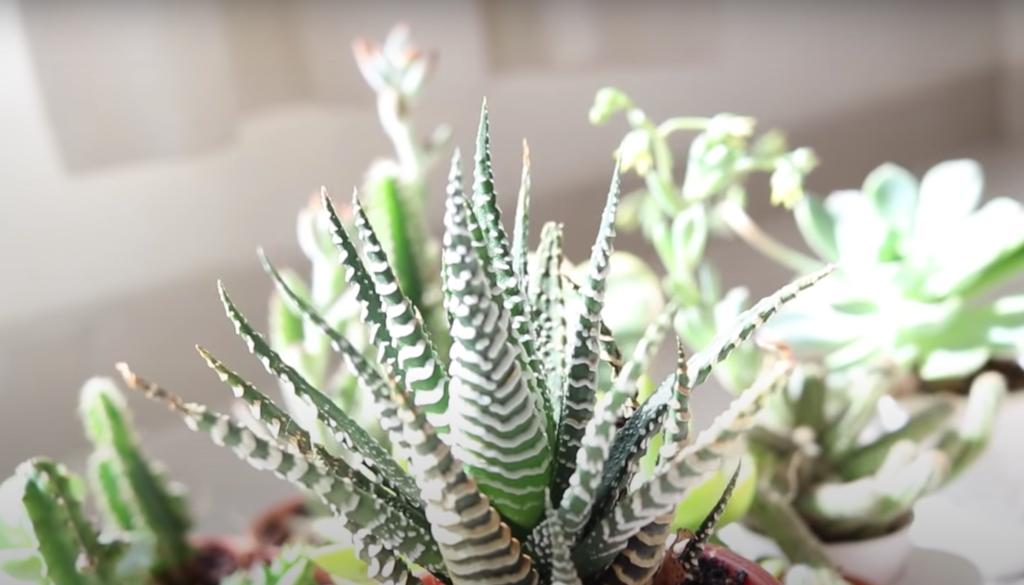
Some succulents like zebra haworthia are more sturdy.
Even if they are not getting falling of direct sunlight still they can cope for a longer time.
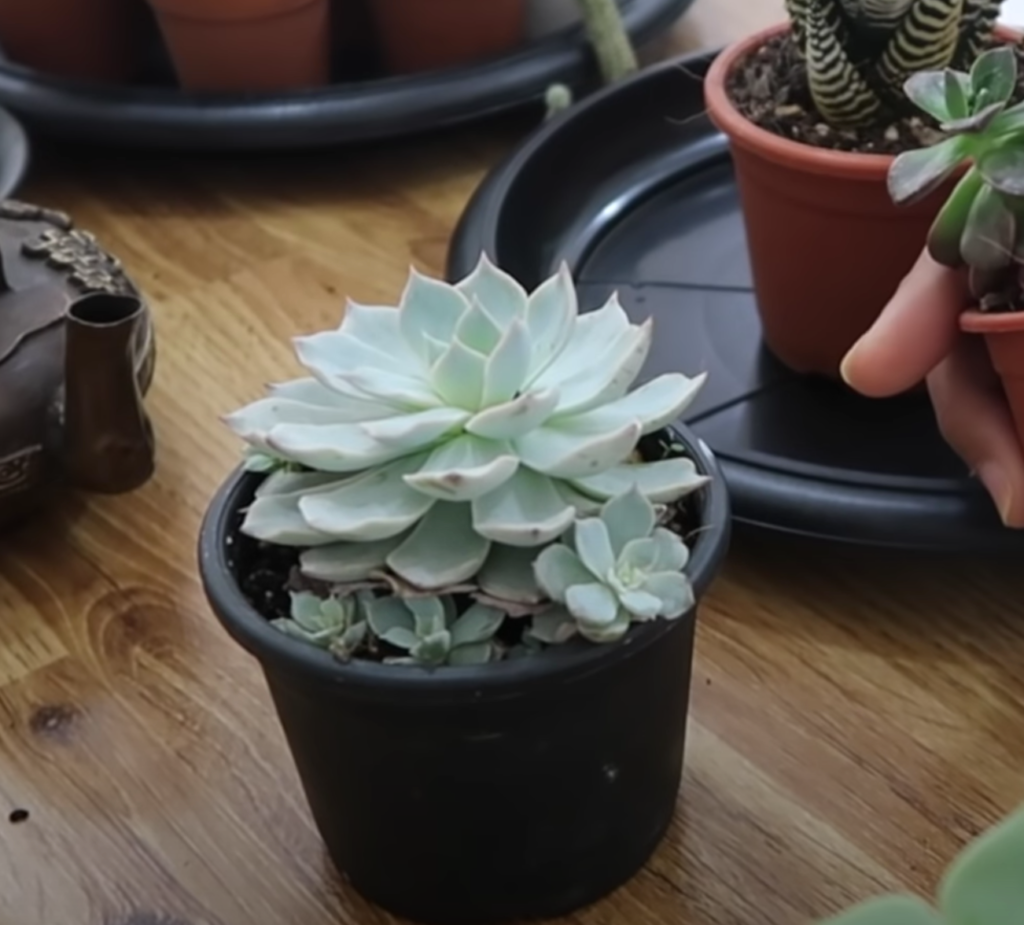
But, succulents like Echeverria can’t hold to no sunlight for a longer duration and ultimately their leaves will start sagging.
Sometimes, you can find some dried, dead leaves underneath a plant. Which is okay and maybe just because of aging.
Signs of overwatering succulents
How to tell if you’re overwatering succulents? Here, are the 4 main symptoms of overwatering succulents.
1. Yellow leaves
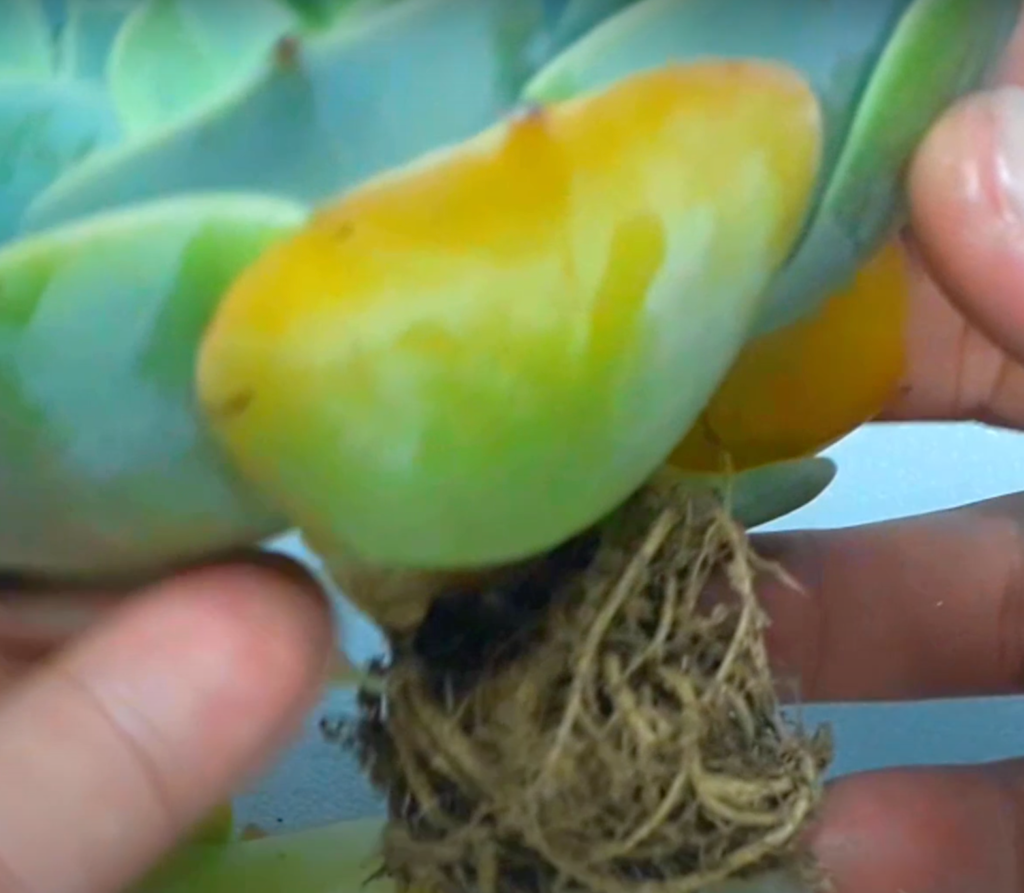
Yellow or brown leaves are potential signs of unhealthy plants. So, act fast to save your plant from imminent danger of dying.
The first step is the break of all such leaves from your succulent.
2. Mushy and squishy leaves
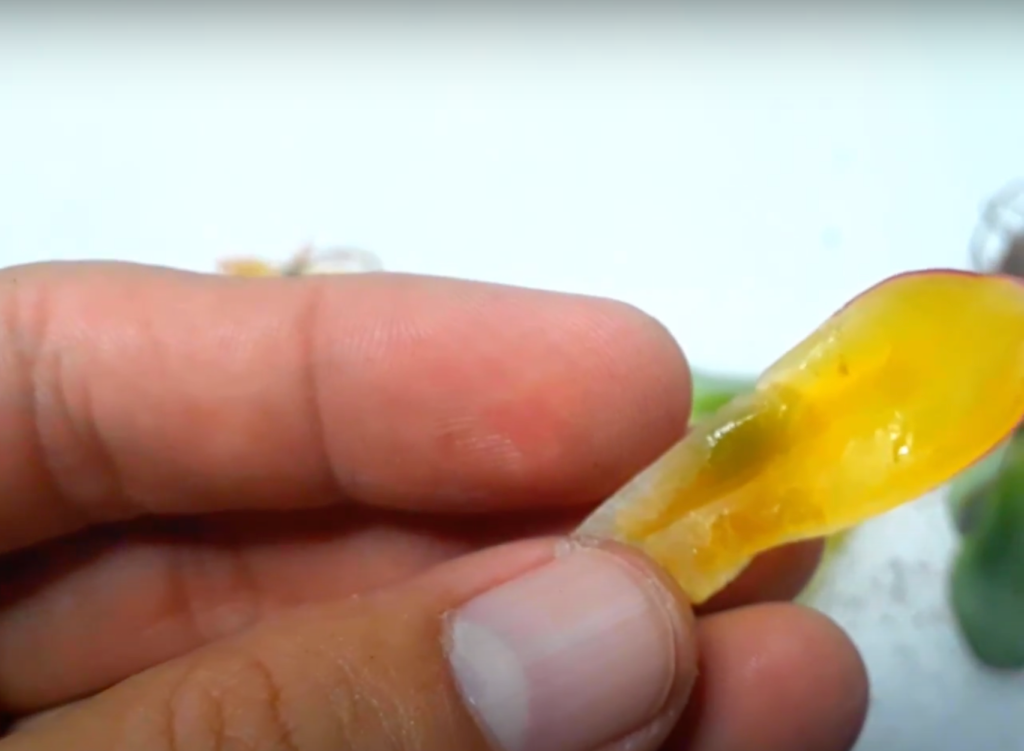
Mushy and squishy leaves mean your plant is suffering from overwatering.
The leaves will look like jelly, very soft and watery.
3. Rot in stems and leaves

This is one of the imminent and obvious signs of overwatering succulents.
Gradually, the rot will spread all over the plant. The leaves will look like having a punctured wounds.
4. Falling leaves
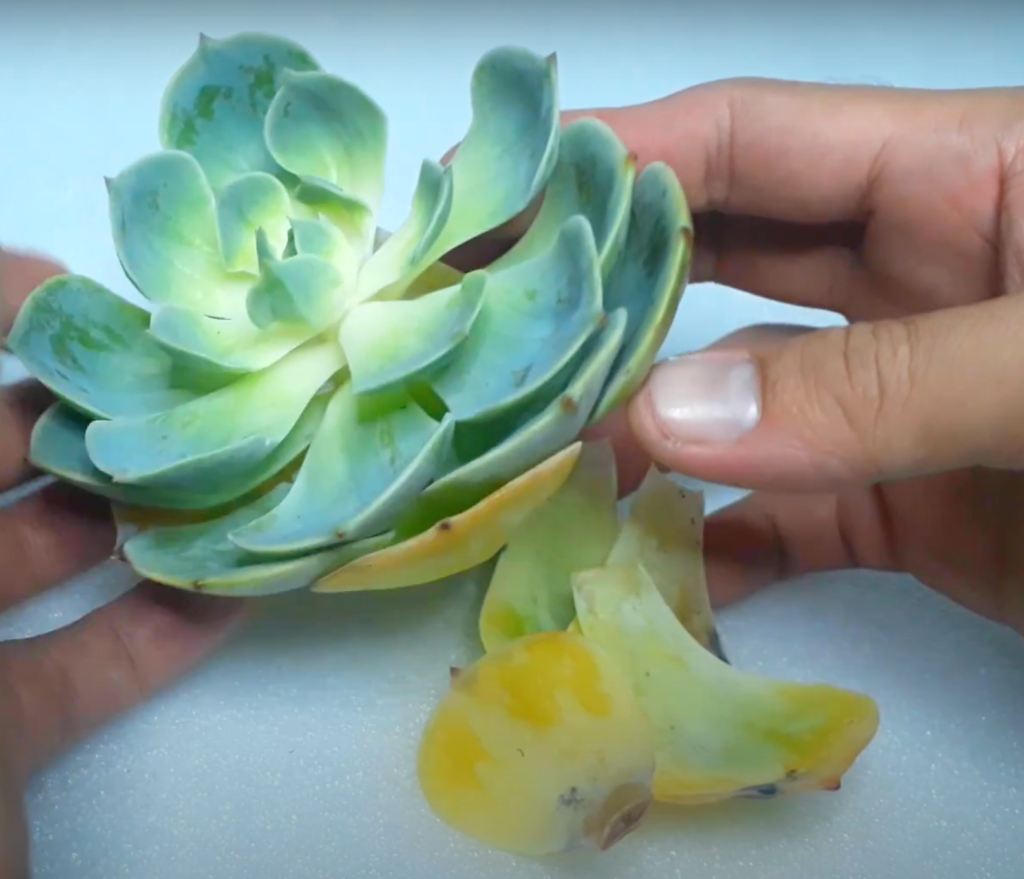
The single or multiple yellow leaves can fall off even with the slightest of touch.
This signifies something is very wrong with your succulent and overwater could be the possible cause.
What happens when we overwater a succulent
Let’s understand the structure of plant cells. Succulent leaves cell has storage compartments that are filled with water.
When overwatering these cells will turn yellow in color due to excessive water content. Occasionally, it may burst and become clogged and the damaged leaves will fall off.
In worst cases, the succulent root and stem will rot due to excessive storage of water. The rot could spread to the core of the plant inviting fungal infections.
Can succulents die from overwatering? By this, it is certain that the plant can’t keep up and will die soon.
According to research, overwatering is the main and primary cause of succulent death.
How to fix Overwatered succulents
Remove all the rotten, saggy, and damaged leaves, stems, or roots. Cut them in such a way that there is no sign of rot, preventing them to spread more.
Air dry for 5 days or so. Replace wet soil with a completely dry one.
Keep it bright indoors, but no direct sunlight.
Do not water until it is cured.
Depending upon the amount of damage you can hold on watering it for weeks or months.
How to avoid overwatering
As a general rule of thumb, offer water to succulents or cacti only when they need it.
Always check that the soil is less than an inch dry (you can do this by adding a thin dry wood to the soil and checking the wetness of the soil.
Check the succulent or cactus leaves are thin.
The best way is to water a succulent in constant intervals. This could be from a gap of 1 to 2 weeks.
This again depends on the succulents type and your current temperature location.
Signs of underwatering succulents
1. Thin Leaves: Leaves become thin when thirsty and need water.
2. Wrinkled leaves: This means that the supply of water is almost dried up.
3. No mussy or falling leaves: No falling leaves except dried leaves.
What happens if we underwater a succulent
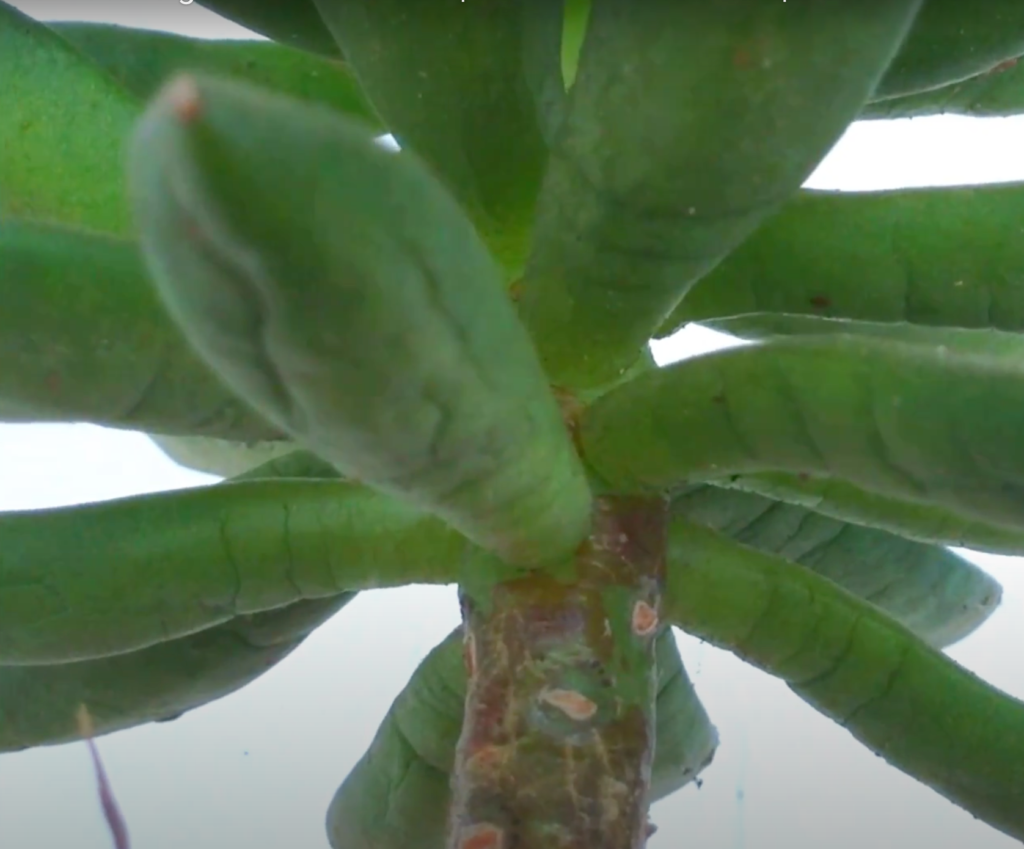
As we know, succulent leaves have small storage cells, which store water for succulents.
When they will not get sufficient water supply from its root. It will use the reservoir of water from the leaves, which causes the leaves to thin out.
In the worst case, the plant ends up sucking water resources from the leaves, making it look thin and wrinkled.
How to fix underwatering succulents
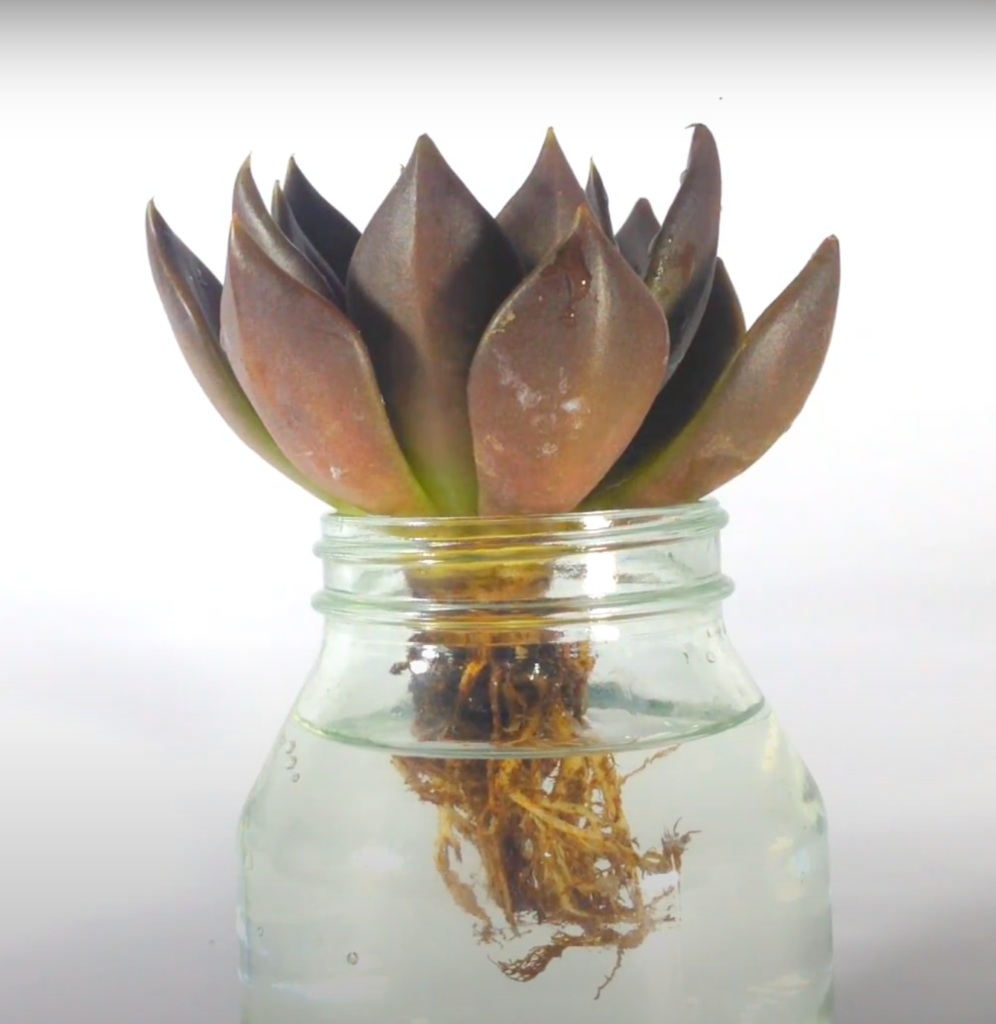
Water your succulents daily or every alternate day until the wrinkles are gone.
Be careful not to overwater the plant. Another solution may be ‘water therapy’.
Make a schedule and water your cactus and succulents in constant intervals.
